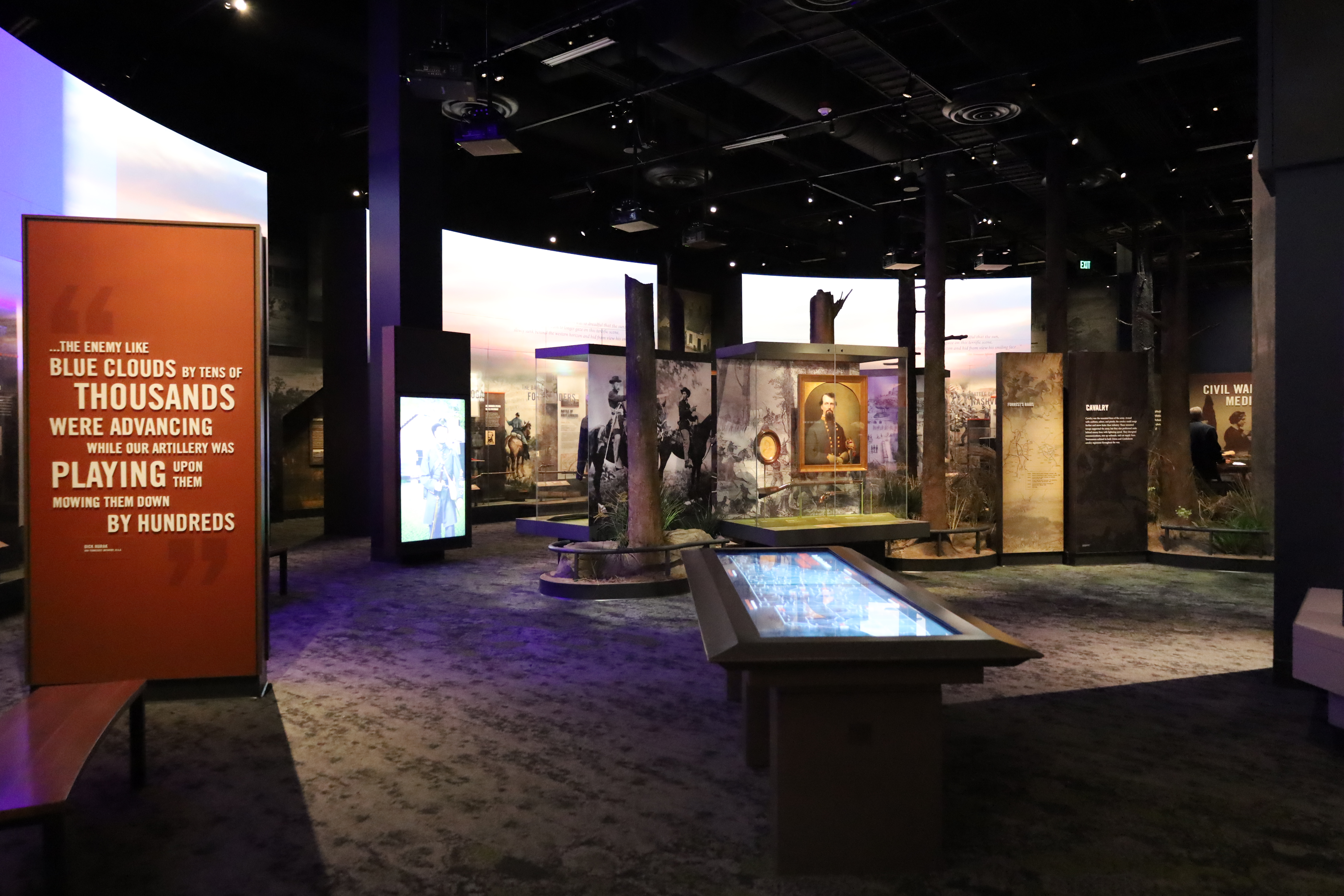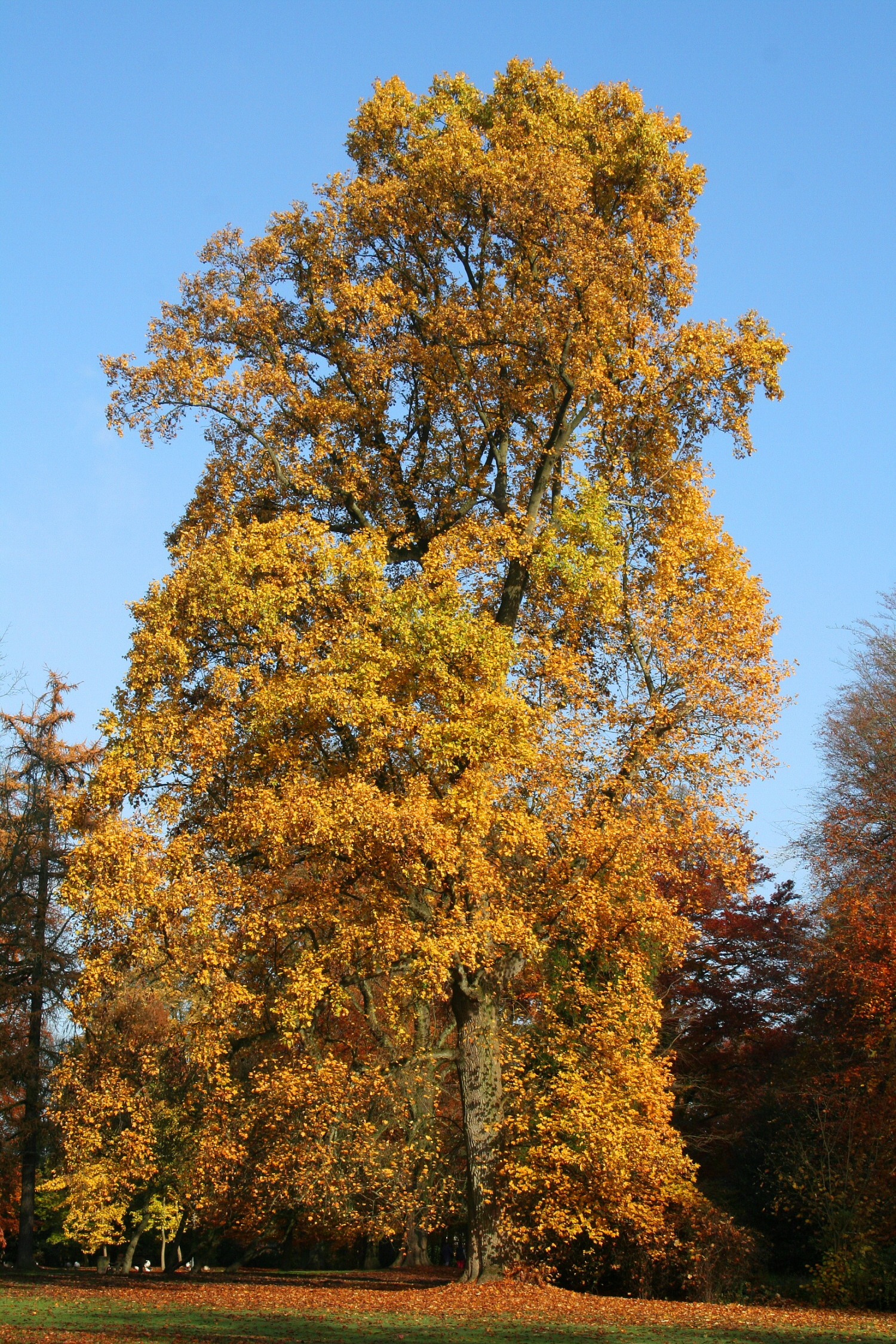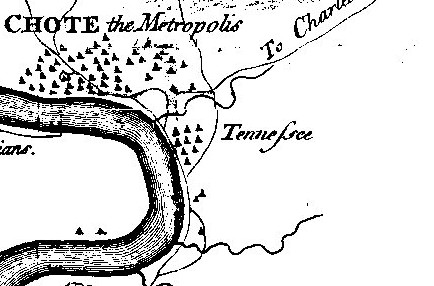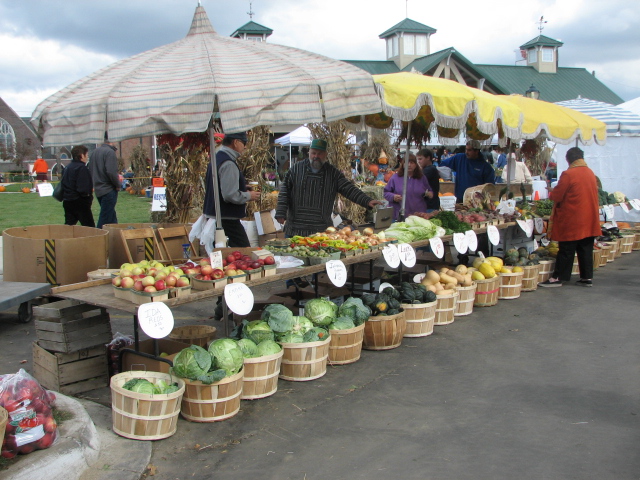|
Bicentennial Mall State Park
Bicentennial Capitol Mall State Park, commonly known as Bicentennial Mall, is an urban linear landscaped state park in downtown Nashville, Tennessee. The park is located on north-northwest of the Tennessee State Capitol, and highlights the state's history, geography, culture, and musical heritage. Receiving more than 2.5 million visitors annually, it is the most visited of Tennessee's 60 state parks. The park is modeled on the National Mall in Washington, D.C., and was first conceptualized in 1989 by former Governor Ned McWherter as part of the planning for the state of Tennessee's bicentennial commemoration. Groundbreaking occurred on June 27, 1994, and the park opened to the public on June 1, 1996, the 200th anniversary of Tennessee's statehood. In 2019 the Tennessee State Museum moved to the northwest corner of the park, followed in 2021 by the Tennessee State Library and Archives, which moved to the northeast corner of the park. The incorporation of these entities into ... [...More Info...] [...Related Items...] OR: [Wikipedia] [Google] [Baidu] [Amazon] |
Tennessee State Capitol
The Tennessee State Capitol, located in Nashville, Tennessee, is the seat of government for the U.S. state of Tennessee. It serves as the home of both houses of the Tennessee General Assembly–the Tennessee House of Representatives and the Tennessee Senate–and also contains the governor's office. Designed by architect William Strickland (1788–1854) of Philadelphia and Nashville, it was built between 1845 and 1859 and is one of Nashville's most prominent examples of Greek Revival architecture. The building, one of 12 state capitols that does not have a dome, was added to the National Register of Historic Places in 1970 and named a National Historic Landmark in 1971. The tomb of James K. Polk, the 11th president of the United States, is on the capitol grounds. Description The Tennessee State Capitol sits atop Capitol Hill, the highest point in Downtown Nashville. It is surrounded by a number of state government buildings, including the Tennessee Supreme Court building for t ... [...More Info...] [...Related Items...] OR: [Wikipedia] [Google] [Baidu] [Amazon] |
Tennessee State Museum
The Tennessee State Museum is a large museum in Nashville depicting the history of the U.S. state of Tennessee. The current facility opened on October 4, 2018, at the corner of Rosa Parks Boulevard and Jefferson Street at the foot of Capitol Hill by the Bicentennial Capitol Mall State Park. The 137,000-square-foot building includes a Tennessee Time Tunnel chronicling the state's history by leading visitors though the museum's permanent collection, a hands-on children's gallery, six rotating galleries, a digital learning center, and a two-story Grand Hall. Exhibitions include significant artifacts related to the state's history, along with displays of art, furniture, textiles, and photographs produced by Tennesseans. The museum's Civil War holdings consists of uniforms, battle flags, and weapons. There is no admission charge for visitors. Museum operations and policies are overseen by the Douglas Henry State Museum Commission, a group of citizens appointed to represent the public i ... [...More Info...] [...Related Items...] OR: [Wikipedia] [Google] [Baidu] [Amazon] |
Lawn
A lawn () is an area of soil-covered land planted with Poaceae, grasses and other durable plants such as clover lawn, clover which are maintained at a short height with a lawn mower (or sometimes grazing animals) and used for aesthetic and recreational purposes—it is also commonly referred to as part of a garden. Lawns are usually composed only of grass species, subject to weed control, weed and pest control, maintained in a green color (e.g., by Irrigation, watering), and are regularly mowed to ensure an acceptable length. Lawns are used around houses, apartments, commercial buildings and offices. Many city parks also have large lawn areas. In recreational contexts, the specialised names Sod, turf, parade, pitch, field or green may be used, depending on the sport and the continent. The term "lawn", referring to a managed grass space, dates to at least the 16th century. With suburban expansion, the lawn has become culturally ingrained in some areas of the world as part o ... [...More Info...] [...Related Items...] OR: [Wikipedia] [Google] [Baidu] [Amazon] |
Tulip Poplar
''Liriodendron tulipifera''—known as the tulip tree, American tulip tree, tulipwood, tuliptree, tulip poplar, whitewood, fiddletree, lynn-tree, hickory-poplar, and yellow-poplar—is the North American representative of the two-species genus ''Liriodendron'' (the other member is ''Liriodendron chinense''). It is native to eastern North America from Southern Ontario and possibly southern Quebec to west to Illinois, and east to southwestern Massachusetts, then south to central Florida and Louisiana. The tulip tree is the tallest tree of the temperate deciduous forest. It can grow to more than in virgin cove forests of the Appalachian Mountains, often with no limbs until it reaches in height, making it a very valuable timber tree. This species is also fast-growing, without the common problems of weak wood strength and short lifespan often seen in fast-growing species. In 2024 the unusual combination of fast-growing with strong wood was explained. No longer called a hardwoo ... [...More Info...] [...Related Items...] OR: [Wikipedia] [Google] [Baidu] [Amazon] |
List Of U
A list is a set of discrete items of information collected and set forth in some format for utility, entertainment, or other purposes. A list may be memorialized in any number of ways, including existing only in the mind of the list-maker, but lists are frequently written down on paper, or maintained electronically. Lists are "most frequently a tool", and "one does not ''read'' but only ''uses'' a list: one looks up the relevant information in it, but usually does not need to deal with it as a whole". Lucie Doležalová,The Potential and Limitations of Studying Lists, in Lucie Doležalová, ed., ''The Charm of a List: From the Sumerians to Computerised Data Processing'' (2009). Purpose It has been observed that, with a few exceptions, "the scholarship on lists remains fragmented". David Wallechinsky, a co-author of '' The Book of Lists'', described the attraction of lists as being "because we live in an era of overstimulation, especially in terms of information, and lists help ... [...More Info...] [...Related Items...] OR: [Wikipedia] [Google] [Baidu] [Amazon] |
Flag Of Tennessee
The flag of Tennessee is the US state flags, official flag of the U.S. state of Tennessee. The flag displays an emblem on a Field (heraldry), field of red, with a strip of blue bordered by white on the Glossary of vexillology#fly, fly. The emblem in the middle consists of three white Star (heraldry), stars on a blue circle also with a white border. The central emblem portion of the flag has been adopted as the state's unofficial logo, and appears in the logos of some Tennessee-based companies and sports teams. Examples include the First Horizon Bank and the Tennessee Titans. In 2001, the North American Vexillological Association surveyed its members on the designs of the 72 U.S. state, territorial, and Canadian provincial flags and ranked the Tennessee flag 14th. History In 1897, Tennessee adopted a red, white, and blue Tricolour (flag), tricolor. The three bars were deliberately slanted in an effort to represent the geographically distinct regions of Tennessee. The flag inclu ... [...More Info...] [...Related Items...] OR: [Wikipedia] [Google] [Baidu] [Amazon] |
Main Line (railway)
The main line, or mainline in American English, of a railway is a track that is used for through trains or is the principal artery of the system from which branch lines, yards, sidings, and spurs are connected. It generally refers to a route between towns, as opposed to a route providing suburban or metro services. It may also be called a trunk line, for example the Grand Trunk Railway The Grand Trunk Railway (; ) was a Rail transport, railway system that operated in the Provinces and territories of Canada, Canadian provinces of Quebec and Ontario and in the List of states and territories of the United States, American sta ... in Canada, or the Trunk Line in Norway. For capacity reasons, main lines in many countries have at least a double track and often contain multiple parallel tracks. Main line tracks are typically operated at higher speeds than branch lines and are generally built and maintained to a higher standard than yards and branch lines. Main lines may als ... [...More Info...] [...Related Items...] OR: [Wikipedia] [Google] [Baidu] [Amazon] |
CSX Transportation
CSX Transportation , known colloquially as simply CSX, is a Class I freight railroad company operating in the Eastern United States and the Canadian provinces of Ontario and Quebec. Operating about 21,000 route miles () of track, it is the leading subsidiary of CSX Corporation, a Fortune 500 company headquartered in Jacksonville, Florida. CSX Corporation was formed in 1980 from the merger of Chessie System and Seaboard Coast Line Industries, two holding companies that controlled railroads operating in the Eastern United States. Initially only a holding company, the subsidiaries that made up CSX Corporation completed merging in 1987. CSX Transportation formally came into existence in 1986, as the successor of Seaboard System Railroad. In 1999, CSX Transportation acquired about half of Conrail in a joint purchase with competitor Norfolk Southern Railway. In 2022, it acquired Pan Am Railways, extending its reach into northern New England. Norfolk Southern remains CSX's chief ... [...More Info...] [...Related Items...] OR: [Wikipedia] [Google] [Baidu] [Amazon] |
Tennessee Capitol Mall 2022i
Tennessee (, ), officially the State of Tennessee, is a landlocked state in the Southeastern region of the United States. It borders Kentucky to the north, Virginia to the northeast, North Carolina to the east, Georgia, Alabama, and Mississippi to the south, Arkansas to the southwest, and Missouri to the northwest. Tennessee is the 36th-largest by area and the 15th-most populous of the 50 states. According to the United States Census Bureau, the state's estimated population as of 2024 is 7.22 million. Tennessee is geographically, culturally, and legally divided into three Grand Divisions of East, Middle, and West Tennessee. Nashville is the state's capital and largest city, and anchors its largest metropolitan area. Tennessee has diverse terrain and landforms, and from east to west, contains a mix of cultural features characteristic of Appalachia, the Upland South, and the Deep South. The Blue Ridge Mountains along the eastern border reach some of the highest elevations ... [...More Info...] [...Related Items...] OR: [Wikipedia] [Google] [Baidu] [Amazon] |
American Planning Association
The American Planning Association (APA) is a professional organization representing the field of urban planning in the United States. APA was formed in 1978, when two separate professional planning organizations, the American Institute of Planners and the American Society of Planning Officials, were merged into a single organization. The American Institute of Certified Planners is now the organization's professional branch. Functions Like many professional organizations, the American Planning Association's main function is to serve as a forum for the exchange of ideas between people who work in the field of urban planning. The organization keeps track of the various improvement efforts underway around the country, which may include the improvement or construction of new parks, highways and roads, or residential developments. The organization is also a starting point for people looking for employment. The association also publishes the ''Journal of the American Planning Asso ... [...More Info...] [...Related Items...] OR: [Wikipedia] [Google] [Baidu] [Amazon] |
Farmers' Market
A farmers' market (or farmers market according to the AP stylebook, also farmer's market in the Cambridge Dictionary) is a physical retail marketplace intended to sell foods directly by farmers to consumers. Farmers' markets may be indoors or outdoors and typically consist of booths, tables or stands where farmers sell their produce, live animals and plants, and sometimes prepared foods and beverages. Farmers' markets exist in many countries worldwide and reflect the local culture and economy. The size of the market may be just a few stalls or it may be as large as several city blocks. Due to their nature, they tend to be less rigidly regulated than retail produce shops. They are distinguished from public markets, which are generally housed in permanent structures, open year-round, and offer a variety of non-farmer/non-producer vendors, packaged foods and non-food products. History The current concept of a farmers' market is similar to past concepts, but different in relati ... [...More Info...] [...Related Items...] OR: [Wikipedia] [Google] [Baidu] [Amazon] |
Beaux-Arts Architecture
Beaux-Arts architecture ( , ) was the academic architectural style taught at the in Paris, particularly from the 1830s to the end of the 19th century. It drew upon the principles of French neoclassicism, but also incorporated Renaissance and Baroque elements, and used modern materials, such as iron and glass, and later, steel. It was an important style and enormous influence in Europe and the Americas through the end of the 19th century, and into the 20th, particularly for institutional and public buildings. History The Beaux-Arts style evolved from the French classicism of the Style Louis XIV, and then French neoclassicism beginning with Style Louis XV and Style Louis XVI. French architectural styles before the French Revolution were governed by Académie royale d'architecture (1671–1793), then, following the French Revolution, by the Architecture section of the . The academy held the competition for the Grand Prix de Rome in architecture, which offered prize winn ... [...More Info...] [...Related Items...] OR: [Wikipedia] [Google] [Baidu] [Amazon] |









